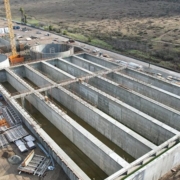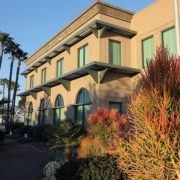Work on the East County Advanced Water Purification Program facilities and pipelines reached multiple milestones at the start of 2024, and construction continues on schedule at multiple East County locations through 2025. As soon as 2026, the AWP will deliver water to the faucets of customers in the Padre Dam Municipal Water District, Helix Water District, Lakeside Water District service areas, and the northern portion of the Otay Water District service area.
At the main construction site north of Santee Lakes, more than 60% of the concrete has been poured for the water recycling, solids handling, and advanced water purification facilities. Nearly 60% of the 2.3 total miles of open-cut construction on wastewater pipelines that make up the AWP Program are complete.
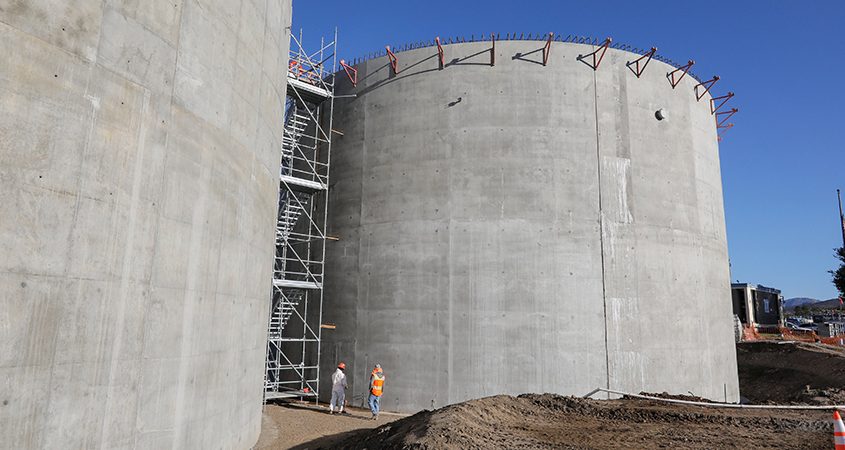
More than 60% of the concrete has been poured for the East County Advanced Water Program water recycling, solids handling and advanced water purification facilities. Photo: East County AWP
Construction also continues on Fanita Parkway, north of Ganley Road in Santee, and within Santee Lakes Recreational Preserve. Pipeline water testing is now underway on that installed pipeline.
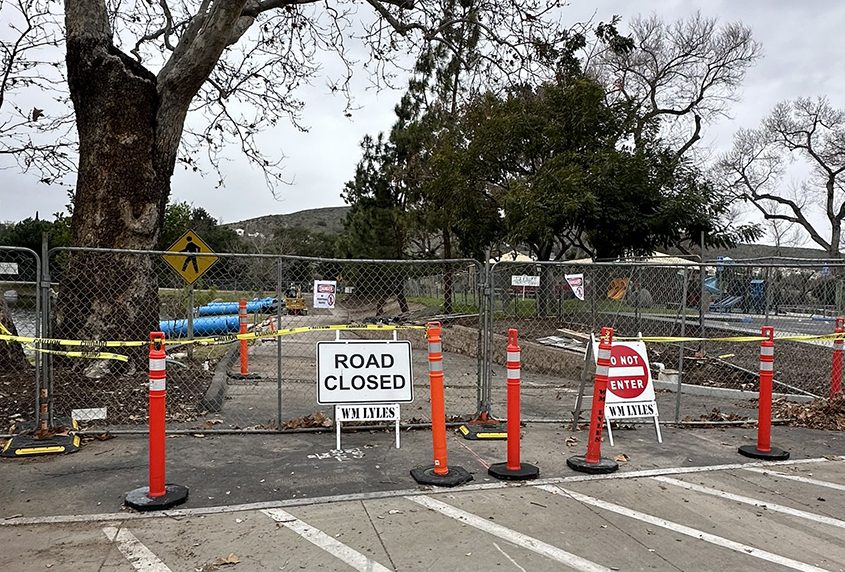
Work on the pipelines for the East County Advanced Water Program is affecting access to the Santee Lakes Recreational Preserve, which remains open. Photo: East County AWP
In addition, pipeline work at Santee Lakes is occurring between Lakes 3 and 4. There is a road closure and no parking in some areas. The Kiwanis Playground at Lake 4 remains open and parking has been preserved for playground visitors.
“Roughly a year and a half ago, we started with a blank slate and since then, the Joint Powers Authority and its project partners have made significant achievements at each of the construction sites,” said Mark Niemiec, director of the East County AWP. “It’s during these ongoing activities within the community including at Santee Lakes that we really appreciate our neighbors’ patience and understanding.”
Pipeline undergrounding scheduled this spring
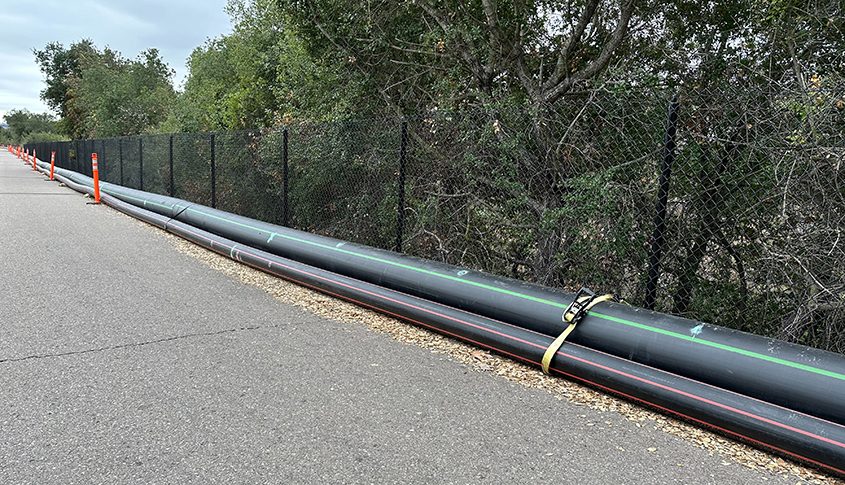
These new pipelines servicing the East County Advanced Water Program will soon be moved underground. Photo: East County AWP
The wastewater pipelines that will run from the East Mission Gorge Pump Station near State Route 52 to the first lake at Santee Lakes will soon be pulled underground. This trenchless construction method called “Horizontal Directional Drilling” minimizes the impacts to nearby waterways, including the San Diego River. The process takes an estimated 24 to 36 straight hours.
Elsewhere, Fanita Parkway will be temporarily closed for up to one week in March between Ganley Road and Lake Canyon Road to allow for paving on both sides of the street. Residents will see detour signs prior to the closure. The road closure will occur during the day from 7 a.m. to 5 p.m.
Purified water pipeline construction is continuing west on Mast Boulevard in Santee, as well as west on Mapleview Street in Lakeside and from Laurel Canyon Road to El Monte Road. Lane closures can be expected.
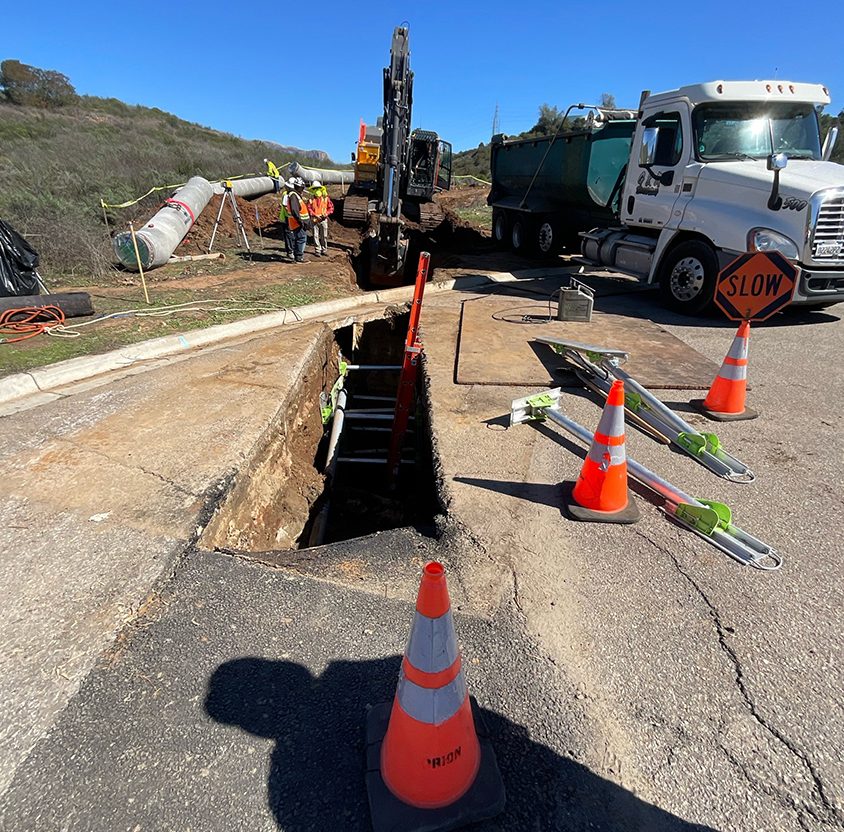
Residents and commuters in Santee and Lakeside can monitor road closures on the East County AWP website. Photo: East County AWP
Construction on the 23,000-square-foot Visitors Center is in progress and will be completed by the end of 2025. It will house administrative offices, the operation control center, a testing laboratory, and a community room. The steel beam installation, including 66 columns and 100 beams, will use 350,000 pounds of U.S. steel.
The Flume Trail at Lake Jennings is officially back open following a 10-month closure for purified pipeline construction. The trail will close again during the summer for a couple of months to allow for additional pipeline construction near the shoreline.
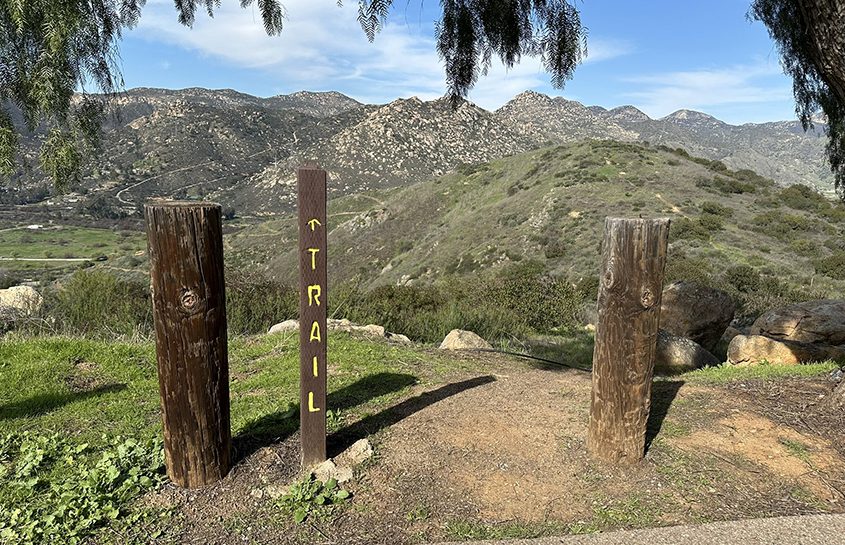
The Flume Trail at Lake Jennings is officially back open following a 10-month closure. It will close again for additional construction later this summer. Photo: East County AWP
When complete, the East County AWP Program will be able to create up to 11.5 million gallons of purified water per day, which is enough to serve an estimated 400,000 people, or roughly 30% of East San Diego County’s water supply.
The East County AWP Program includes construction of the following:
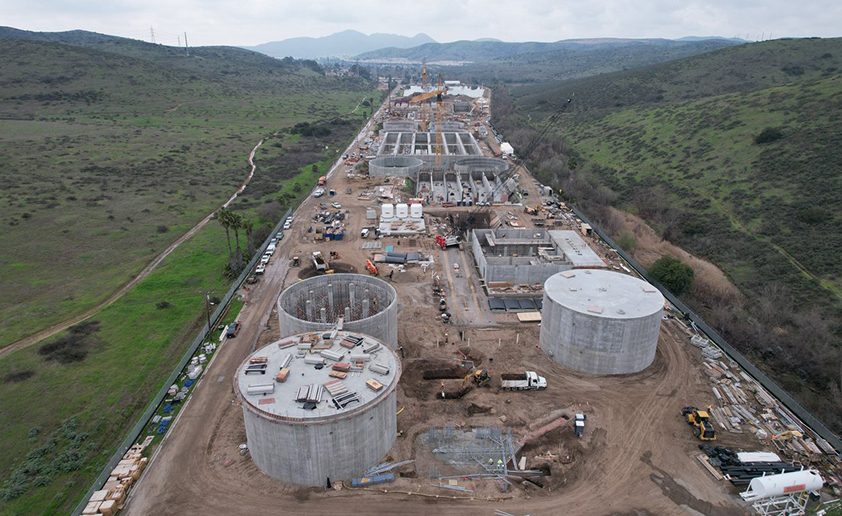
When operational, the East County AWP will be able to create up to 11.5 million gallons of purified water per day which is enough to serve roughly 30% of East San Diego County’s water supply. Photo: East County AWP
- Water recycling facility treating 16 million gallons per day (MGD) of wastewater.
- Advanced water purification facility treating and purifying 11.5 MGD.
- Purified water pipeline transporting purified water 10 miles to Lake Jennings.
- Wastewater and residual pipelines. Each segment is three miles long.
- East Mission Gorge Pump Station (retrofitted) and City of San Diego partnership of regional brine and wastewater pipelines traveling from the pump station in Santee to the City of San Diego’s sewer line in Mission Valley.
- Energy recovery system creating three megawatts of renewable energy.
To stay up-to-date with project schedules, community impacts and work descriptions, check the East County Advanced Water Purification Program’s interactive map on www.eastcountyawp.com or visit @eastcountyawp on social media

